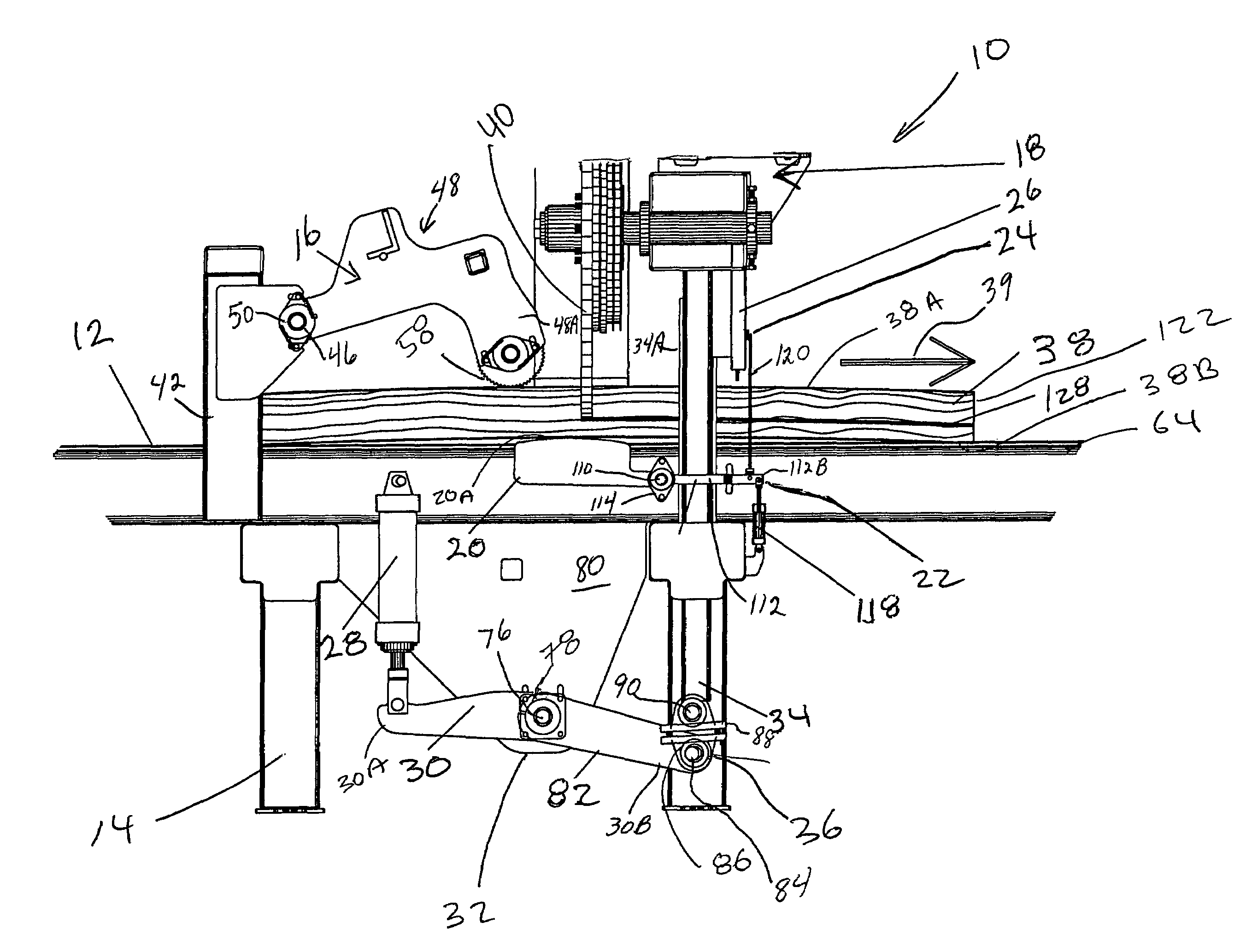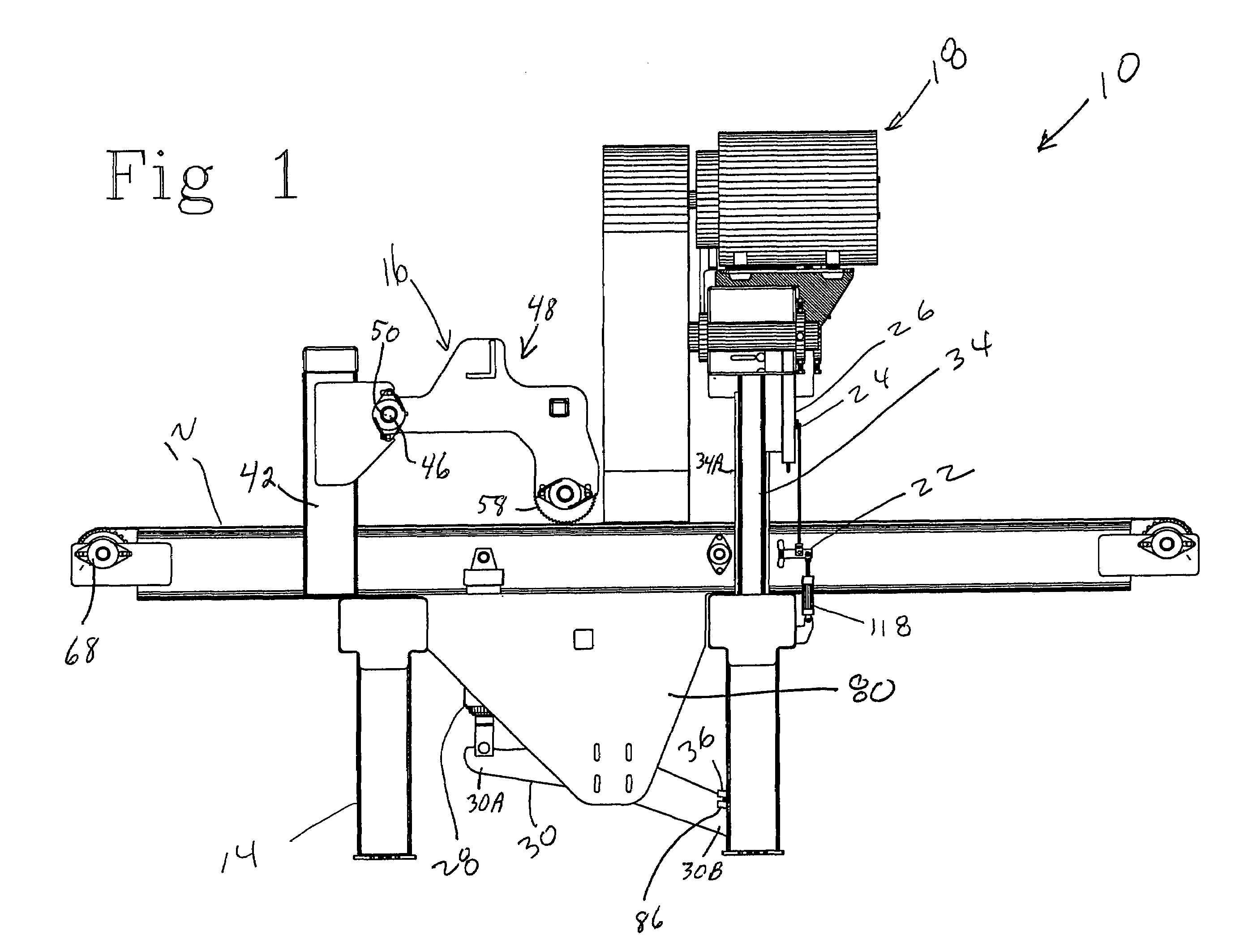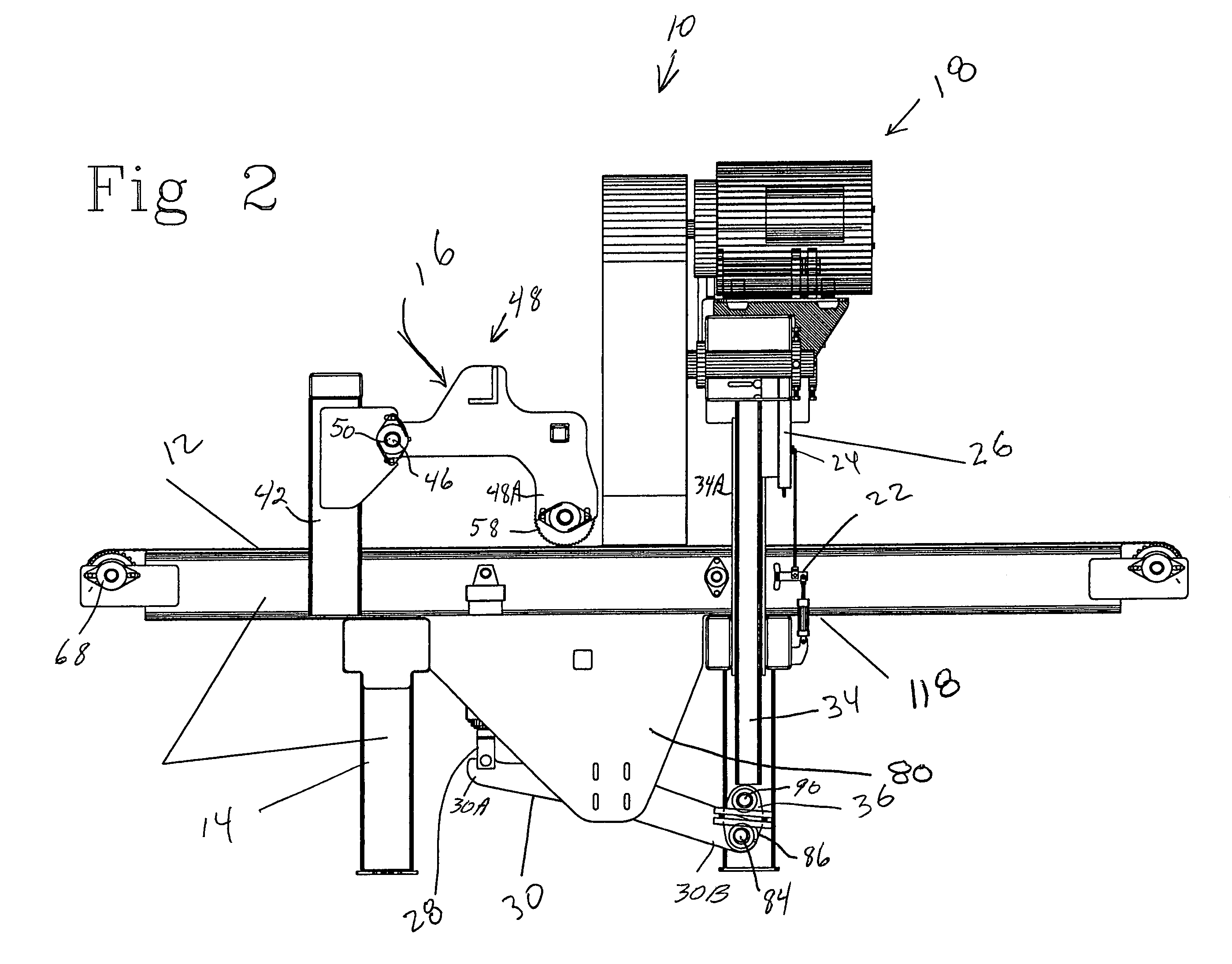Horizontal curve sawing apparatus
a sawing apparatus and horizontal curve technology, which is applied in the direction of metal sawing devices, band saws, manufacturing tools, etc., can solve the problems of compound less accurate alignment of the cant relative to the blades and the curvature of the cant, and the end portion of the cut board often will not have the correct thickness and will have to be scrapped. , to achieve the effect of smooth and accurate cutting
- Summary
- Abstract
- Description
- Claims
- Application Information
AI Technical Summary
Benefits of technology
Problems solved by technology
Method used
Image
Examples
Embodiment Construction
[0026]FIGS. 1 through 8 show a cant saw 10 made in accordance with the present invention. Referring briefly to FIG. 8, the cant saw 10 includes a conveyor table 12 with a frame including legs 14, a hold down and feeder assembly 16, a horizontally cutting saw head 18, and a cant curvature sensing shoe 20. A linkage mechanism 22 connects the sensing shoe 20 to a sliding magnetic pick-up mechanism 24, which slides inside a probe 26 that is fixed relative to the saw head 18. A programmable logic controller 24 (shown in FIG. 9) receives a signal from the probe 26 and, in turn, sends a signal to a piston actuator 28 to extend or retract in order to raise or lower the saw head 18 via an actuator arm 30 which pivots about a fulcrum 32. The actuator arm 30 is connected at one end 30A to the piston actuator 28, and it is connected at the other end 30B to a first pivot shaft 84, which is connected to a saw head lift shaft 90 through a double knuckle arrangement 36. The saw head lift shaft 90 i...
PUM
| Property | Measurement | Unit |
|---|---|---|
| displacement | aaaaa | aaaaa |
| thickness | aaaaa | aaaaa |
| movement | aaaaa | aaaaa |
Abstract
Description
Claims
Application Information
 Login to View More
Login to View More - R&D
- Intellectual Property
- Life Sciences
- Materials
- Tech Scout
- Unparalleled Data Quality
- Higher Quality Content
- 60% Fewer Hallucinations
Browse by: Latest US Patents, China's latest patents, Technical Efficacy Thesaurus, Application Domain, Technology Topic, Popular Technical Reports.
© 2025 PatSnap. All rights reserved.Legal|Privacy policy|Modern Slavery Act Transparency Statement|Sitemap|About US| Contact US: help@patsnap.com



